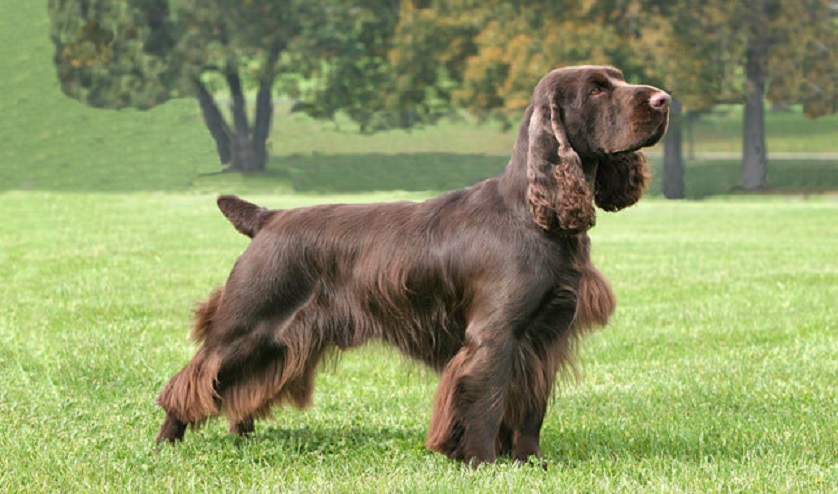
Field Spaniel

Navigate through the tabs
Navigate through the tabs below to view the breed's info of your interest.
The breed's info is divided in four sections; namely:
the breed's history ,
the breed's main stats ,
the dog's potential health issues
and finally, how the breed scored in 26 different categories.
All the above information should give you a respectively good overview for the dog of your interest.
Dog Breed's Main Info
The Breed's History:
The Field Spaniel was developed in England in the latter half of the 19th century to be a medium-sized, all-black dog, which was unusual at the time as most hunters preferred dogs with some white so they could be easily seen in the field. The Field Spaniel was created at the same time that dog shows were becoming popular and is considered the first spaniel developed for conformation showing while at the same time retaining his excellent skills in the field.
Until 1901, spaniels were divided by weight, so if one puppy in a litter grew to be more than 25 pounds, he was called a Field Spaniel. If he weighed less than 25 pounds, he was classified as a Cocker Spaniel.
The breed started out as a popular dog, but through some not-so-successful cross-breeding, fanciers turned him into a dog that was longer than he was tall, with short legs, a large head, and too much coat. That didn't make for a very good or very attractive hunting dog, and the public expressed its displeasure. The Field Spaniel's popularity bottomed out. Fortunately, a man named Mortimer Smith made the effort to bring back the Field Spaniel's functional good looks.
The AKC registered its first Field Spaniel, Colehill Rufus, in 1894, but when a fire destroyed a major kennel in 1909, the breed practically disappeared in the United States. The last registration of a Field Spaniel occurred in 1930. The next importation of Field Spaniels occurred in 1967, and those three dogs along with subsequent imports are the basis of the breed today. Despite his fine qualities, he remains a rare breed compared to other spaniels.
Country of Origin:
England
Breed Group:
Sporting
Height:
1 foot, 4 inch. to 1 foot, 7 inch. (40,64 to 48,26 cm)
Weight:
37 to 45 pounds (16,78 to 20,42 Kg)
Life Span:
10 to 12 years
Potential Health Issues:
Ear Infections,
Hip Dysplasia,
Allergies,
Autoimmune Hemolytic Anemia,
Cancer,
Cataracts,
Ectropion,
Epilepsy,
Hypothyroidism,
Progressive Retinal Atrophy (PRA)
Adaptability
Apartment Living:
First Time Owners:
Sensitivity:
Being Alone:
Cold Weather:
Hot Weather:
Friendliness
Affection With Family:
With Kids:
With Dogs:
With Strangers:
Health and Grooming
Shedding:
Drooling:
Easy To Groom:
Overall Health:
Weight Gain Potential:
Size:
Training
Easiness:
Intelligence:
Mouthiness:
Prey Drive:
Barking or Howling:
Wanderlust:
Need For Exercise
Energy Level:
Intensity:
Exercise Needs:
Playfulness:
Our Mobile Application
Check out Our Mobile Application "Dog Breeds Central"
